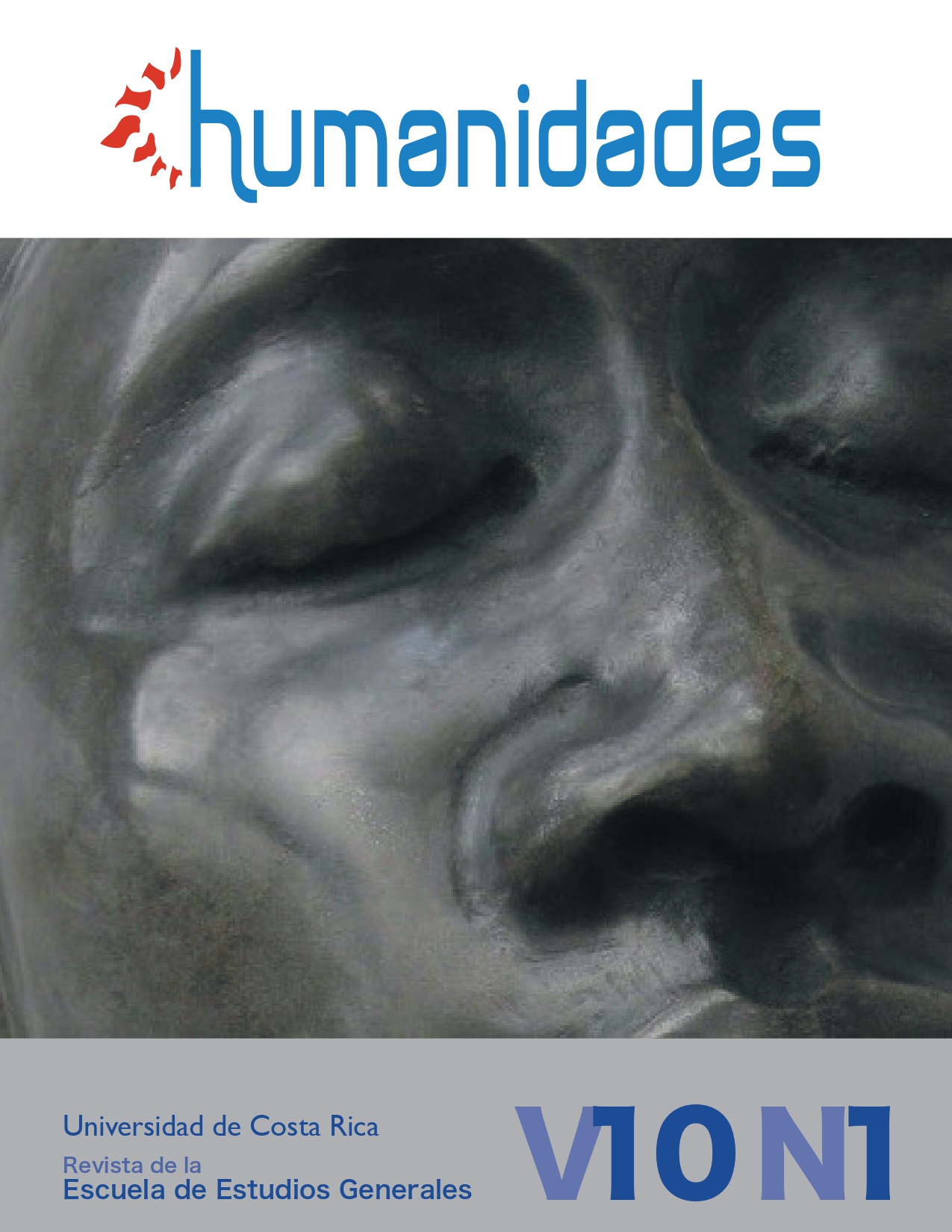Abstract
The purpose of this article is to establish a certain type of relationship between essay, memory and fiction. We will demonstrate that this particular combination doesn´t happen exclusively because prose is fictionalized since the writer’s memory is suspicious and unreliable (common place of criticism), that is to say that whoever engages in essayistic writing from memory tends to mystify its object of study, multiplying it as who puts two mirrors face to face, presenting the image multiplied under the appearance of personal experience. In order to do this, first we will inspect the proximity between essay and memoir’s; afterwards, we will exhibit the way in which essay writing is activated through diffuse and reconstructed memory. In the end, as evidence to our premise, we will attest how this is done in “Portrait of an Invisible Man” by American writer Paul Auster.
References
Asensi, M. (2016). Teoría de los modelos de mundo y teoría de los mundos posibles. Actio Nova: Revista de teoría de la literatura y literatura comparada (0), 38-55.
Auster, P. (1996). Los poemas y los días. Fractal, 1(1), 83-124.
Auster, P. (2003). Experimentos con la verdad. España: Anagrama.
Auster, P. (2012). Retrato de un hombre invisible. En P. Auster, La invención de la soledad (pp. 11-101). México: Booket Planeta.
Barnes, J. (2010). Nada que temer. España: Anagrama.
Baudrillard, J. (1978). Cultura y simulacro. A. Vicens y P. Rovira (Trads.). Barcelona: Kariós.
Godínez, A. (28 de junio de 2015). Figuras del padre. El padre, origen y destino del hijo. Replicante. Recuperado de https://revistareplicante.com/figuras-del-padre/
González, T. (2019). La escuela del aburrimiento o los límites del ensayo. Ficción y reflexión en la escritura de Luigi Amara. En M. Kunz y C. Mondragón (Eds.), Nuevas narrativas mexicanas 3. Escrituras en transformación (pp. 9-23). España: Linkgua Ediciones S.L.
Crum, M. (28 de septiembre de 2015). Nothing but the truth?: On lying and memoir-writing. The Huffington Post. Recuperado de https://www.huffingtonpost.com.mx/entry/memoir-writing-facts_us_56044f0be4b08820d91c2132?ec_carp=2637163545536970267
Cubas, F. (19 de febrero de 2013). La plural soledad del retrato múltiple. El Fotógrafo Lector. Recuperado de https://fotografolector.com/2013/02/19/la-plural-soledad-del-retrato-multiple/#more-632
Gutiérrez, C. (s. f.). La fotografía como recurso en la literatura. Academia. Recuperado de https://www.academia.edu/12759093/LA_FOTOGRAFÍA_COMO_RECURSO_EN _LA_LITERATURA
Deleuze, G. (1989). Lógica del sentido. Barcelona: Paidós.
Fass, P. S. (2006). The Memoir Problem. Reviews in American History, 34(1), 107-123. Recuperado de https://steinhardt.nyu.edu/scmsAdmin/media/users/jnw216/HMSS/fass_2006.pdf
Hitchens, C. (2013). Hitch-22. Confesiones y contradicciones. España: De Bolsillo.
Laing, R. D. (1976). Mistificación, confusión y conflicto. En R. Laing, La otra locura (pp. 397-418). España: Tusquets. Recuperado de https://extension.uned.es/archivos_publicos/webex_actividades/4923 mistificacionconfusionyconflicto1.pdf
Lopate, P. (2005). Reflection and retrospection: a pedagogic mystery story. Fourth Genre: Explorations in Nonfiction, 143-156. Recuperado de http://www.unm.edu/~gmartin/Essays/Lopate%20%20Reflection%20&%20Retrospe
Lopate, P. (2013). To show and tell. Estados Unidos: Free Press.
López, E. (2006). Poder, tradición e historia del arte: Apariencia desnuda. La obra de Marcel Duchamp. Anales de Historia del Arte, 16, 315-338. Recuperado de https://revistas.ucm.es/index.php/ ANHA/article/view/ANHA0606110315A/31119
McManus, J. W. (2008). Mirrors, TRANS/formation and Slippage in the Five-Way Portrait of Marcel Duchamp. The Space between, IV(1), 125-148. Recuperado de https://www.monmouth.edu/department-of-english/documents/mirrors-transformation-and-slippage-in-the-five-way-portrait-of-marcel-duchamp.pdf/
Paz, O. (2008). Apariencia desnuda. La obra de Marcel Duchamp. México: Era.
Reichstein, I. (2007). A multigraph from Montreal. Photographic Canadiana, 33(1), 12-17. Recuperado de http://www.phsc.ca/reichstein/multigraph_article.pdf
Roth, P. (2007). Patrimonio. España: Seix Barral.
Schwartz, M. (1998). Memoir? Fiction? Where's the line? Creative Nonfiction, (10), 338-343. Recuperado de https://kucreativewriting.wordpress.com/memory/memoir-fiction-wheres-the-line/
Weinberg, L. (2012). El ensayo y la buena fe. En D. Vandebosch, D. Castilleja y E. H. Houvenaghel (Eds.), El ensayo hispánico: cruces de géneros, síntesis de formas (pp. 21-46). España: Librairie Droz.
Weinberg, L. (2014). El ensayo en busca del sentido. Madrid: Iberoamericana.
Yehya, N. (14 de mayo de 2015). Entrevista con Phillip Lopate. Letras Libres. Recuperado de https://www.letraslibres.com/mexico-espana/entrevista-phillip-lopate


